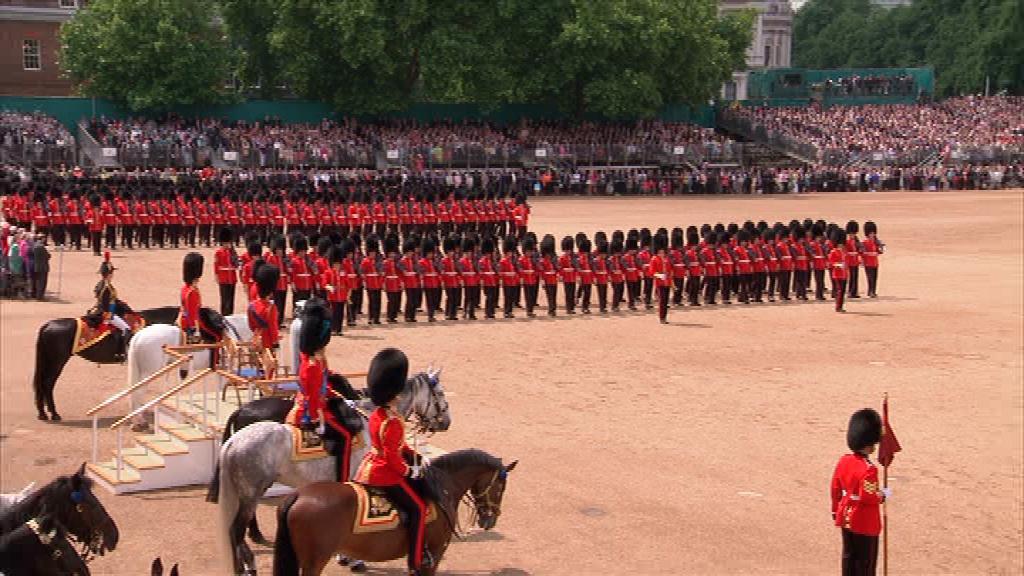
The March Past of the Footguards
The Guards Officers take their posts. The Colour moves to the rear of the Escort and No's 1 to 5 Guards are ordered to turn about by the mounted 'Adjutant of the Parade'.
No's 2 to 5 Guard right form at the halt to music from the Drums.

No's 1 to 5 guards now turn about and then all the guards begin their march past in line abreast in slow time. The 'Field Officer in Brigade Waiting' and 'Major of the Parade' (who are both mounted) take their places at the head of the troops for the salute.
As each corner of the parade ground is negotiated, the officer orders his company to "prepare to change direction, left" and one of the NCOs positioned on the edges of the front rank of the company, known as the 'Right Guide' or 'Left Guide', will call "Right Sir!" as he reaches the correct position, as a signal to the officer to give the order "Left Form!" ordering the company to change direction.
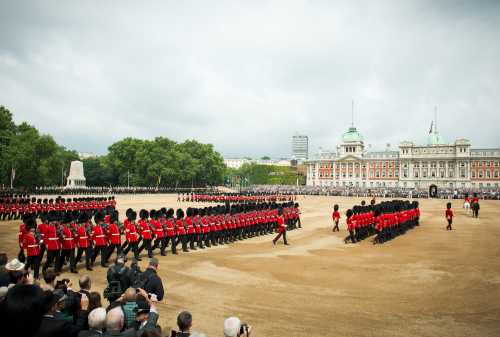
(Photo courtesy of Sgt. Paul
Shaw LBIPP (Army))
Video clip of
the 'Left Form'
(clip provided by Benjamin Whiley)
Execution of the Left Form The
guards conduct left forms at each corner of the parade
ground. The guards are marching in line, and on the
command "CHANGE DIRECTION LEFT, LEFT - FORM!",
the 'left guide' executes a left turn on the march and
everyone else in the front rank executes a left incline
(45 degrees). The 'left guide' marches for a further 5
paces and then marks time. Each subsequent file then
marches a further two (7, 9, 11, etc) and commences
marking time until the 'right guide' reports "RIGHT,
SIR" and the guard commander orders
"FOR-WARD!". The guards also use 'clearing
point drill' in order to alleviate the congestion that
would otherwise develop. This is done by having all those
in a guard in the middle of its form, acting on the
"FOR-WARD!" of the guard ahead of them,
marching out 7 paces and then commencing marking time
again until their guard completes the form. |
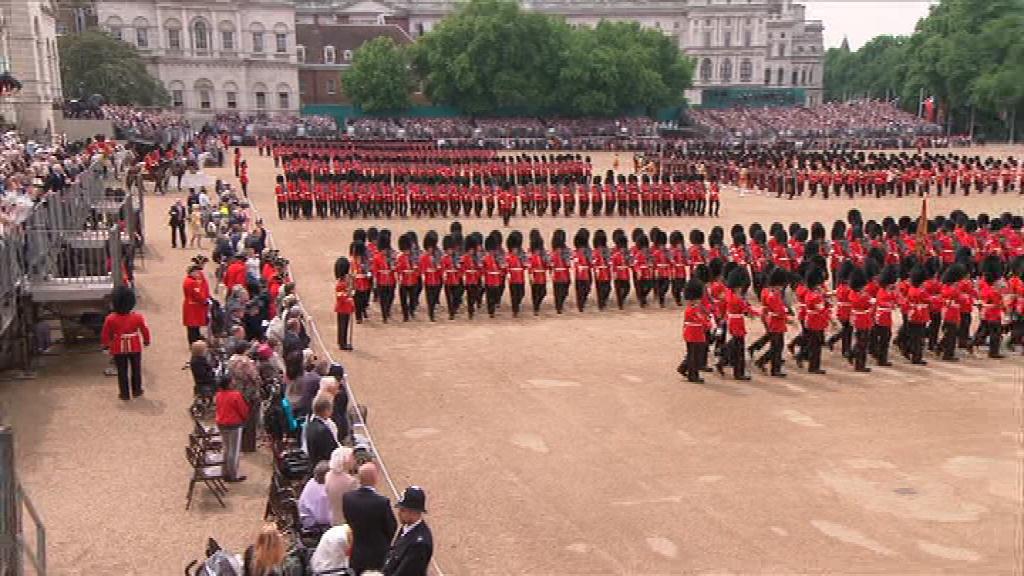
The Colour is lowered in salute as it passes the Queen at the saluting base. The lowering of the colour is known as the 'Flourish' and the raising of it, after passing the dais, is known as the 'Recover'.
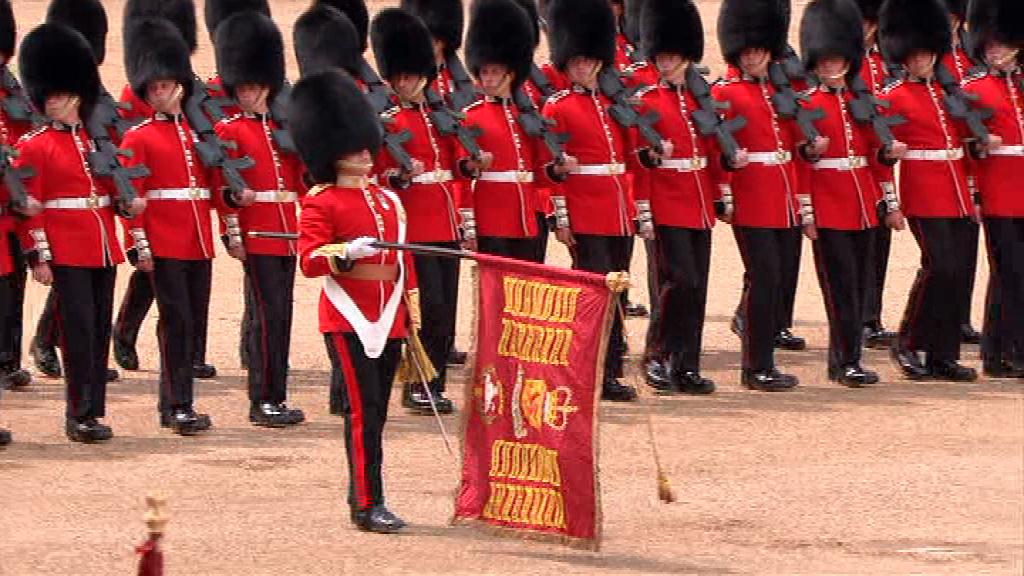
As each regiment of
footguards passes the saluting base, the bands play their
Regimental Slow Marches. The Regimental Slow Marches are: The
Grenadier Guards ![]() 'Scipio', The Coldstream Guards
'Scipio', The Coldstream Guards ![]() 'Figaro' (Mozart 1764), The Scots Guards
'Figaro' (Mozart 1764), The Scots Guards ![]() 'The Garb of
Old Gaul'
(John Reed 1770) , The Irish Guards
'The Garb of
Old Gaul'
(John Reed 1770) , The Irish Guards ![]() 'Let
Erin Remember'
and The Welsh Guards
'Let
Erin Remember'
and The Welsh Guards ![]() 'Men of
Harlech'.
'Men of
Harlech'.
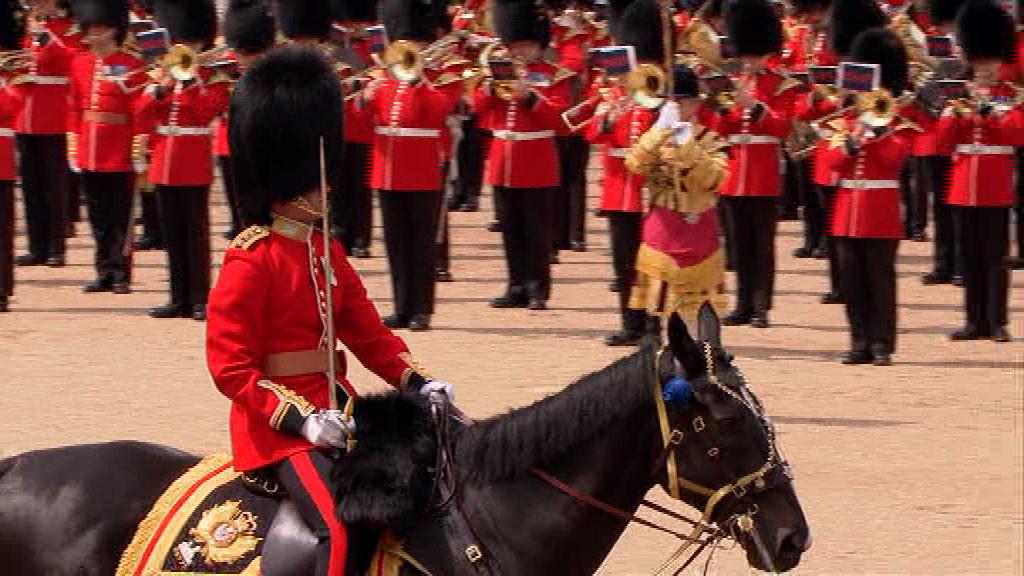
The Adjutant (mounted) brings up the rear of the march past. As he clears the saluting base, the Field Officer rides out 10 yards from behind the dais, turns his horse and salutes Her Majesty.
The bands pause momentarily whilst the Field Officer orders the Quick March (15 paces per minute).
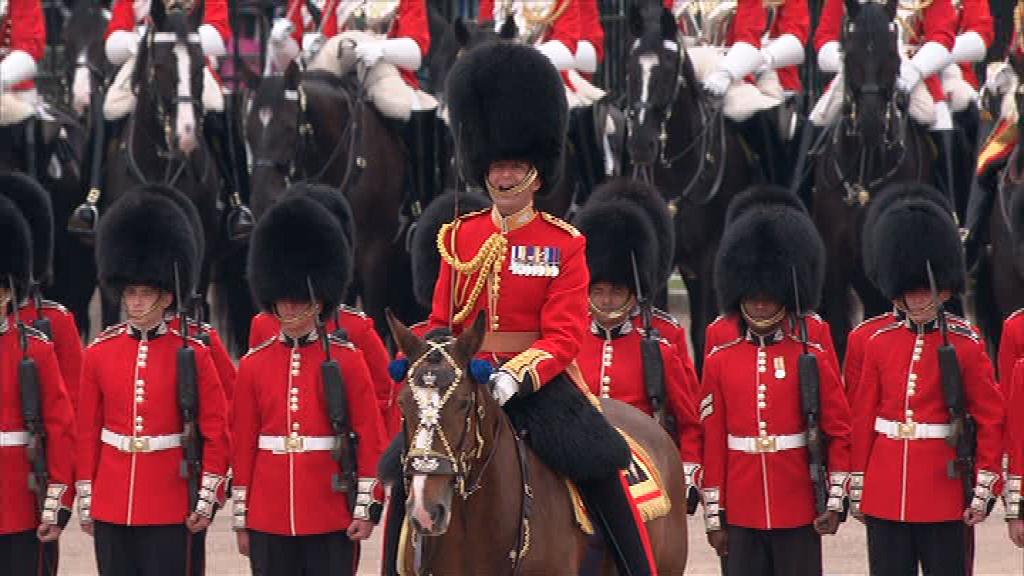
The Field Officer then rides across to lead the parade again in the March Past in quick time. The Guards then march past to their Regimental Quick Marches.

The Regimental Quick
Marches are: The Grenadier Guards - ![]() 'The British Grenadiers', The Coldstream Guards -
'The British Grenadiers', The Coldstream Guards - ![]() 'Milanollo' adopted in 1882, The Scots Guards
-
'Milanollo' adopted in 1882, The Scots Guards
- ![]() 'Hielan'
Laddie'
(originally known as 'Cockleshells' and written in 1701), The
Irish Guards -
'Hielan'
Laddie'
(originally known as 'Cockleshells' and written in 1701), The
Irish Guards - ![]() 'St.
Patrick's Day'
(probably first appeared in print in 1749, although it is thought
to have been known as early as 1615) and The Welsh Guards -
'St.
Patrick's Day'
(probably first appeared in print in 1749, although it is thought
to have been known as early as 1615) and The Welsh Guards - ![]() 'The
Rising of the Lark'.
'The
Rising of the Lark'.
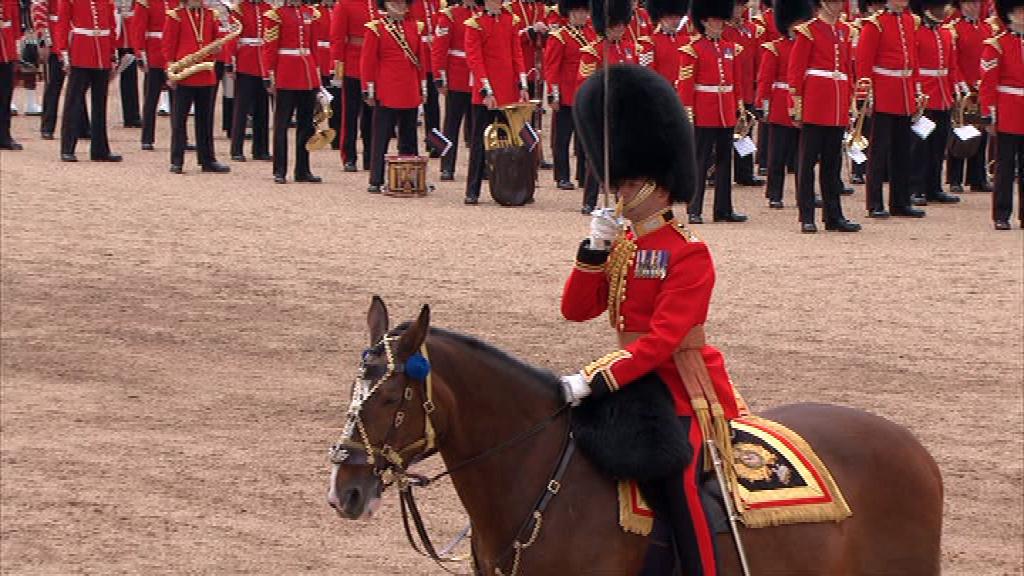
The Adjutant again brings up the rear of the parade and the Field Officer rides out once more to salute Her Majesty.